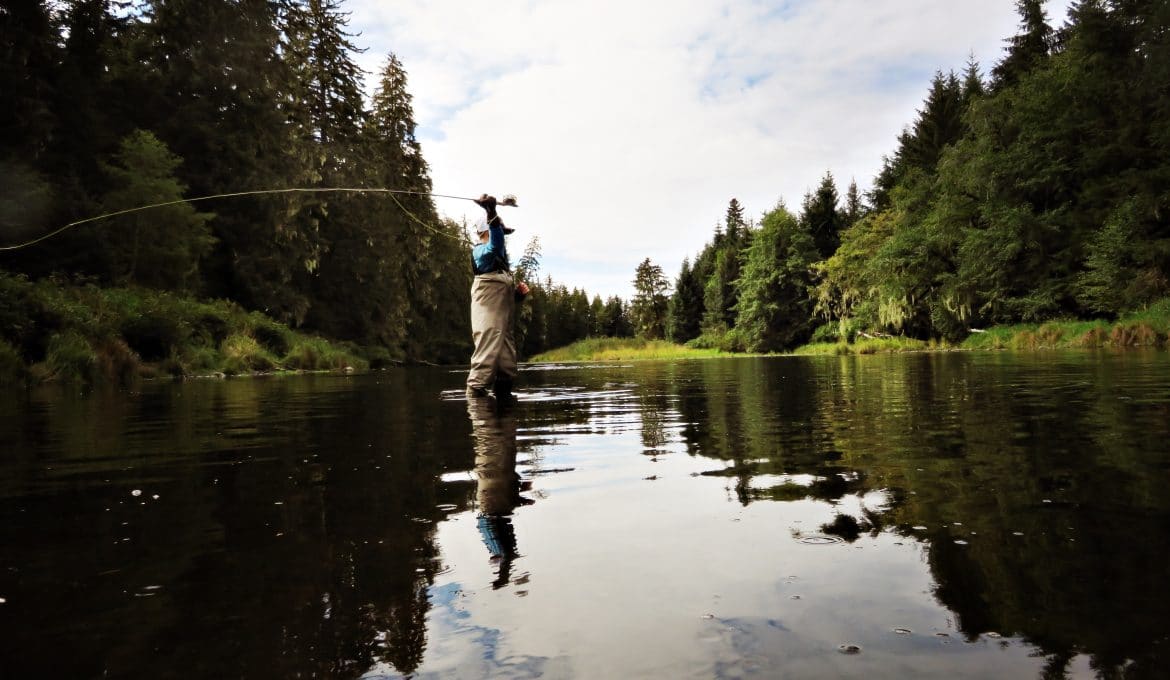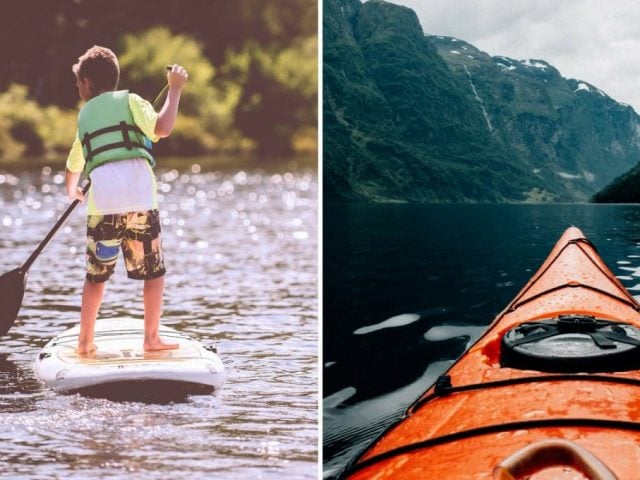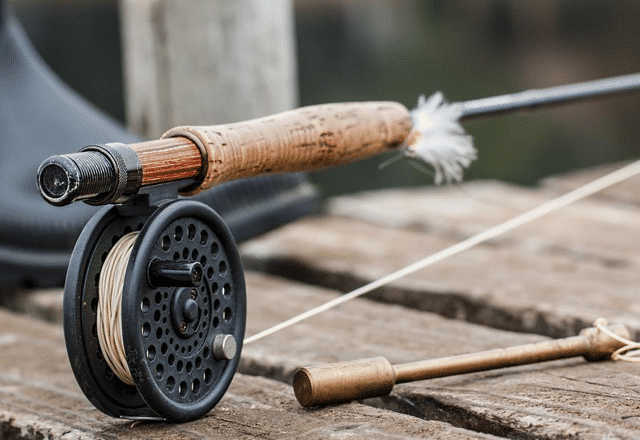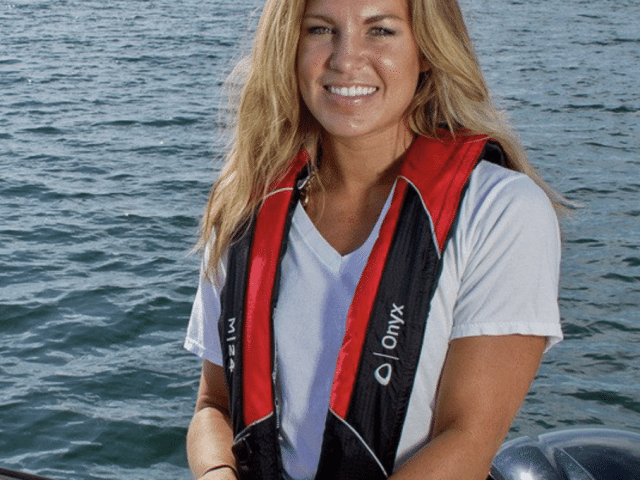If you’re learning about fly fishing and trying to master the sport, it’s easy to get overwhelmed by all the information and how it differs from traditional spin rod fishing. If you’re looking for a more comprehensive article on the ins and outs of fly fishing click here.
In this article, we’re taking a hyper-focused look at the fly fishing cast which is the most critical and challenging part of the sport. It’s easy to go out and get all your equipment together, hit the water, and have no idea what you’re doing when you go to cast for the first time.
Let’s start with some basic understandings of why fly casting is so different.
Understanding the Fundamentals of Fly Fishing
The main difference between casting a fly rod from any other rod is the fact that you do not have any weight on your rod. When you cast a spinning rod, you usually do so with the aid of a weight and a heavy lure, so that allows you to target a specific location on the water and get your lure there.
With flies, you don’t have any weight other than the line. Fly line is much heavier which allows you to gain a little distance but fly fishing requires you to “load” the rod before each cast.
Loading the rod is the process of casting backward to gain momentum to cast forward. This picture below shows you exactly what we’re talking about.
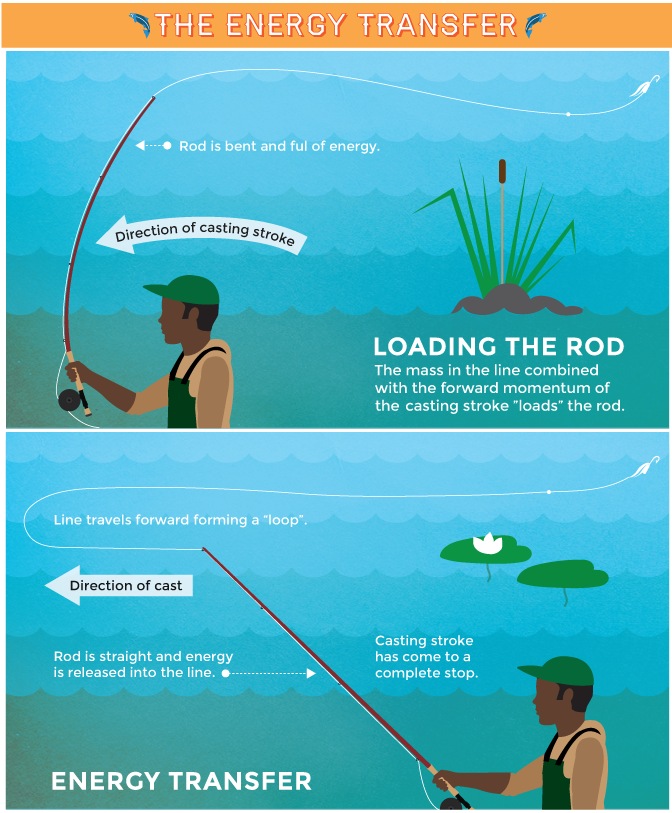
Source: Fix.com Blog
By loading the rod during your backcast, you are basically energizing your rod so when you cast forward your rod will fling the fly forward giving you the distance you need.
Different Casting Techniques and Their Purpose
Now that you understand why casting technique is an important factor of fly fishing, it’s time to discuss how you’ll go about these casts. There are a few different strategies to accomplish this, and the method you choose depends on a few different factors.
- Your level of experience
- The amount of room you have
- Wind levels
Let’s start by breaking down the simplest and most effective way to fly cast.
Two-Stroke Loop Cast
Two-stroke or overhead casting is the most basic technique and the greatest way to energize the rod to give you the distance you want. It’s easy to practice this method on dry land in your yard or wherever.
A two-stroke cast consists of two major components – one being your backcast and the other is your forward cast.
- Pull out some of the line on your fly rod while you’re holding the rod in front of you.
- Pull your rod back in a swift but straight motion over your head and stop when the rod is pointed at just beyond a 90-degree angle.
- Wait for your line to unfurl behind you completely
- At the exact moment when the line completely straightens out you bring the rod forward again in the same straight quick motion.
It’s as simple as that. Now, this method does require you to have enough room behind you for the backcast, so if you are fishing a small stream or creek, you may not have enough space to make the overhead cast happen effectively. Always be aware of your surroundings and pay attention for any low hanging trees or brush that you might get hung up on.

Due to the need for space, it always helps to bring multiple strategies to the table, and that is where our next method comes in.
Roll Casting
Roll casting is a bit more complicated, and it requires you to have water to practice properly. This strategy is useful when you do not have any space behind you on the water because it doesn’t require a lengthy back cast, but you can still power the rod.
Here are the steps to take for the roll cast:
- Start with about 15-20 feet of line in front of you with your rod tip pointed down towards the water.
- Slowly pick your rod up just beyond a 90-degree angle at a steady pace, so you drag your fly along the water. At this point, your line should be slack and hanging down behind you from your rod tip.
- When the line is slack, you want to sharply move your rod forward back to its original position and stop dead when you reach that point. This should lift your fly out of the water, and your line will create a loop which will propel the fly forward back onto the water.
It’s important that you do not pull your fly out of the water when you are lifting your rod. Having the water on your fly and line gives it a little weight which helps with your cast.
Water Haul Casting
The quality of your casts is dramatically impacted by the amount of wind you’re dealing with on the water. What do you do if it’s a windy day and it’s throwing your casts off? You could try water haul casting.
This method is used on windy days to help put more energy into your casts, and it’s essentially the same as the traditional two-stroke cast. The main difference between this and the overhead cast is the amount of time you let your fly sit on the water before casting.
- Follow the steps for the overhead cast, lift your rod over your head in a sharp and quick motion, so your line unfurls behind you and your fly lands on the water.
- Instead of striking forward immediately, let your fly sit on the water just long enough for it to soak in the water for a second.
- When you cast forward the tension from your fly getting pulled from the water loads the rod more and allows for extra speed and momentum on windy days.
- Make sure you do not let your fly sit in the water for too long. If it sinks into the water too far, you won’t get the snap you need to propel the fly forward, and it will ruin your cast.
As with the regular overhead cast, this also requires you to have enough space to backcast, and it requires a slow to the moderate current because if the current of the water is too strong, it will pull your fly too much resulting in a less successful forward cast.
Tips for Mastering Fly Casting

Unfortunately, there are no expert tips or anything that I could say to help you understand it better. The best way to learn is to either get out on the water and experiment or take a class. I highly recommend finding a local class or an expert to teach you the basics. You’ll learn a lot faster which will result in a better experience and less frustration.
After a quick google search, I was able to find five local sports shops that offer free fly fishing outings in my area so I know you could too.
Get Some Help
If you’re not interested in taking a class or hiring someone you could always head out to a local hot spot in your area and find someone willing to help you. I’ve done this in the past, and it almost always goes over well. Most fly anglers will have no problem lending a hand and showing you the basics. If you’ve ever fished before, you know that other anglers love talking about the sport and showing off what they know. Be modest and don’t be afraid to ask for help.
Practice With Plenty of Room
This is a critical beginner step and something I highly recommend because I made this mistake. I made the mistake of trying to be a big shot and fishing the small rivers and streams where I knew everyone else was fly fishing and as a result, I made a fool out of myself and probably aggravated a lot of the people fishing around me.
Practice on a lake where you know you have plenty of room around you and not a lot of people to laugh and shake their head when your line flips and fumbles all over the place.
Don’t Overthink It
The key to fly fishing and any sport, in general, is getting out there and doing it without thinking about it too much. You don’t need to be an expert, and even if you don’t get a single cast right on your first outing, that’s okay. Practice your casts, tie your knots, and perfect the craft. Pretty soon you’ll have the knowledge and experience to teach others.
Let me know what you think! If you have any tips or tricks to offer newbies be sure to leave us a comment below.

